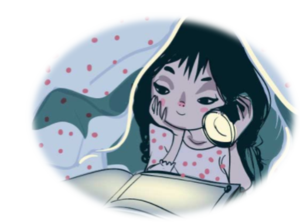11040033
Chemistry - C1 AQA quick quiz
Descripción
Test por Annabeee D, actualizado hace más de 1 año
Más
Menos

|
Creado por Annabeee D
hace más de 6 años
|
|
Resumen del Recurso
Pregunta 1
Pregunta
What is the general name for the particle that all substances are made from?
Respuesta
-
Element
-
Cell
-
Particle
-
Atom
Pregunta 2
Pregunta
Substances that contain only one type of [blank_start]atom[blank_end] are called [blank_start]elements[blank_end]. Byt when atoms of different elements join together, they form [blank_start]compounds[blank_end].
Respuesta
-
atom
-
element
-
compound
-
particle
-
elements
-
compound
-
mixture
-
atoms
-
compounds
-
mixture
-
elements
-
impurities
Pregunta 3
Pregunta
Atoms are made of a tiny nucleus, that is surrounded by a shell of elements.
Respuesta
- True
- False
Pregunta 4
Pregunta
The state symbol used for solids is [blank_start](s)[blank_end].
The state symbol used for [blank_start]liquids[blank_end] is (l).
The state symbol used for gasses is ([blank_start]g[blank_end]).
The state symbol used for [blank_start]aqueous[blank_end] solutions is ([blank_start]aq[blank_end]).
Respuesta
-
(s)
-
(l)
-
liquids
-
solutions
-
g
-
s
-
aqueous
-
compound
-
aq
-
pq
Pregunta 5
Pregunta
If a substance consists of atoms that all have the same number of protons and electrons,l but a different number of neutrons. Is it still an element?
Respuesta
-
No, the number of neutrons has to be the same as the number protons.
-
Yes, it doesnt matter that there is a different number of neutrons to protons.
Pregunta 6
Pregunta
An isotope is an element that has a different number of [blank_start]neutrons[blank_end], but the same number of [blank_start]Protons[blank_end]. So isotopes have [blank_start]a different[blank_end] mass, but [blank_start]the same[blank_end] charge. Many elements can exist as a different number of isotopes, relative [blank_start]atomic[blank_end] mass [blank_start](Ar)[blank_end] is used instead of mass number. This is [blank_start]an average[blank_end] mass, taking into account the all the different masses of the different [blank_start]isotopes[blank_end].
Respuesta
-
neutrons
-
Protons
-
electrons
-
Protons
-
neutrons
-
atoms
-
a different
-
the same
-
the same
-
a different
-
atomic
-
formula
-
(Ar)
-
(atomic mass)
-
(Fm)
-
(ar)
-
an average
-
the best
-
the simplest
-
a general
-
isotopes
-
elements
-
atoms
-
nuclei
Pregunta 7
Pregunta
When different atoms join together, they form a compound.
Respuesta
- True
- False
Pregunta 8
Pregunta
Name the compound CaCl(2)
Respuesta
-
Calcium chloride
-
Calcium chlorate
-
Calcium and carbon
-
Carbon chloride
Pregunta 9
Pregunta
When a metal and [blank_start]a non-metal[blank_end] react together, it is called [blank_start]ionic bonding[blank_end]. The metal atoms lose electrons, which gives the atom a [blank_start]positive[blank_end] charge, whereas the [blank_start]non-metals[blank_end] gain electrons, which gives the electron a [blank_start]negative[blank_end] charge. The opposite charges are [blank_start]attracted[blank_end] to each other.
Respuesta
-
a non-metal
-
ionic bonding
-
positive
-
non-metals
-
negative
-
attracted
Pregunta 10
Pregunta
Compounds can't be represented as formulas.
Respuesta
- True
- False
¿Quieres crear tus propios Tests gratis con GoConqr? Más información.
